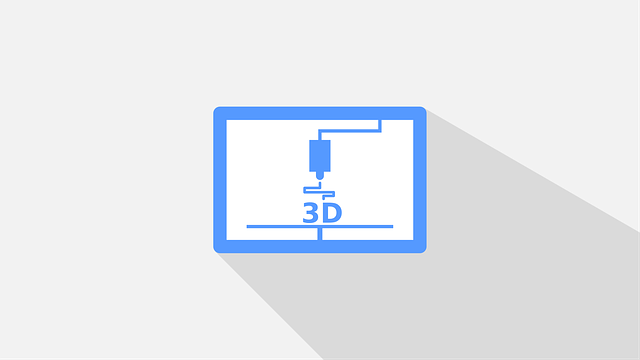3D building models are revolutionizing architectural visualization, offering immersive digital representations of designs that enhance client presentations, facilitate precise planning, and streamline construction management. These advanced tools enable early issue identification, informed decision-making, and realistic marketing, significantly improving communication among designers, clients, and contractors while reducing discrepancies and rework. By providing detailed spatial, lighting, and material analysis through photorealistic images and animations, 3D building models ensure structures accurately reflect the original design vision, ultimately contributing to client satisfaction.
In today’s digital age, architectural visualization has evolved, propelled by the power of realistic 3D building models. These models offer a transformative medium for designers, enabling them to communicate complex ideas effectively and captivate clients. This article explores the multifaceted benefits of 3D modeling in architecture, from enhancing design presentations to its integral role in urban planning. We delve into advanced techniques, essential tools, and future trends, including VR/AR integration and AI’s impact, showcasing how 3D building models are revolutionizing the architectural landscape.
The Power of 3D Building Models in Architectural Visualization
In the realm of architectural visualization, 3D building models have emerged as indispensable tools, revolutionizing how designers and clients conceptualize future structures. These models offer a powerful means to bring architectural ideas to life in a visually immersive manner, providing a clear and accurate representation of proposed designs. By leveraging advanced technologies, architects can create intricate digital replicas of buildings, allowing for detailed inspections and real-time modifications.
The benefits are vast: from enhancing client presentations to facilitating precise planning and construction management. With 3D models, stakeholders can virtually walk through a structure, scrutinize every detail, and identify potential issues early in the design phase. This level of interactivity fosters better communication, enabling informed decisions and ensuring projects stay on track. Moreover, these models play a pivotal role in marketing and sales, offering prospective buyers or tenants a captivating first impression of upcoming developments.
– Understanding the benefits of 3D modeling for architectural representation
In today’s digital age, architects and designers are leveraging the power of 3D building models to revolutionize their workflows. This advanced technology offers a multitude of benefits for architectural representation, enhancing both visualization and planning processes. Unlike traditional 2D drawings, 3D models provide a comprehensive, immersive view of a structure, allowing stakeholders to understand the design intent better. They enable detailed analysis of spatial relationships, lighting, and materiality, facilitating informed decision-making at an early stage in the design process.
Moreover, 3D architectural models facilitate effective communication between designers, clients, and contractors. With interactive visualizations, it becomes easier to convey complex design concepts and make adjustments promptly. This level of realism and interactivity not only streamlines project planning but also ensures that the final built structure aligns closely with the original vision, minimizing discrepancies and rework.
– Enhancing design communication and client presentations
In today’s digital era, 3D building models have become indispensable tools for architects and designers, revolutionizing how they communicate their vision. These realistic architectural models go beyond traditional 2D drawings, providing a comprehensive and immersive representation of proposed designs. By leveraging advanced visualization techniques, professionals can create detailed 3D models that accurately depict structures, materials, and textures. This level of realism not only enhances design communication but also significantly improves client presentations.
When presenting 3D building models to clients, architects can offer a clearer understanding of the final product, allowing for more informed decision-making. Clients can virtually walk through the spaces, experience different lighting conditions, and appreciate the intricate details—all before construction even begins. Such interactive visualizations foster better collaboration and ensure that expectations align with the project’s outcome, streamlining planning processes and leading to happier clients.
Creating Realistic 3D Architectural Models: Techniques and Tools
Creating realistic 3D architectural models has become an indispensable tool in the industry, offering a clear and immersive visualization of proposed structures. This process involves a blend of artistic skill and technological prowess, with architects and designers utilizing specialized software and hardware to bring their concepts to life. Advanced rendering techniques, such as global illumination and physically-based shading, ensure that the models accurately replicate light interactions, resulting in lifelike textures and reflections.
Modern 3D building models go beyond simple geometric representations, incorporating intricate details like material properties, architectural elements, and even environmental contextualization. Architects can now create photorealistic images and animations, enabling stakeholders to experience and understand designs from every angle. This level of realism not only aids in client presentations but also facilitates informed decision-making during the planning phase, ensuring that structures meet both aesthetic and functional expectations.
Realistic 3D building models have become indispensable tools in architectural visualization, revolutionizing the way designs are presented and understood. By leveraging advanced techniques and tools, architects can now create immersive digital environments that accurately represent their visions. This not only enhances design communication but also improves client presentations, fostering better decision-making processes. The future of architectural planning looks bright, with 3D building models poised to continue shaping the industry’s landscape.
